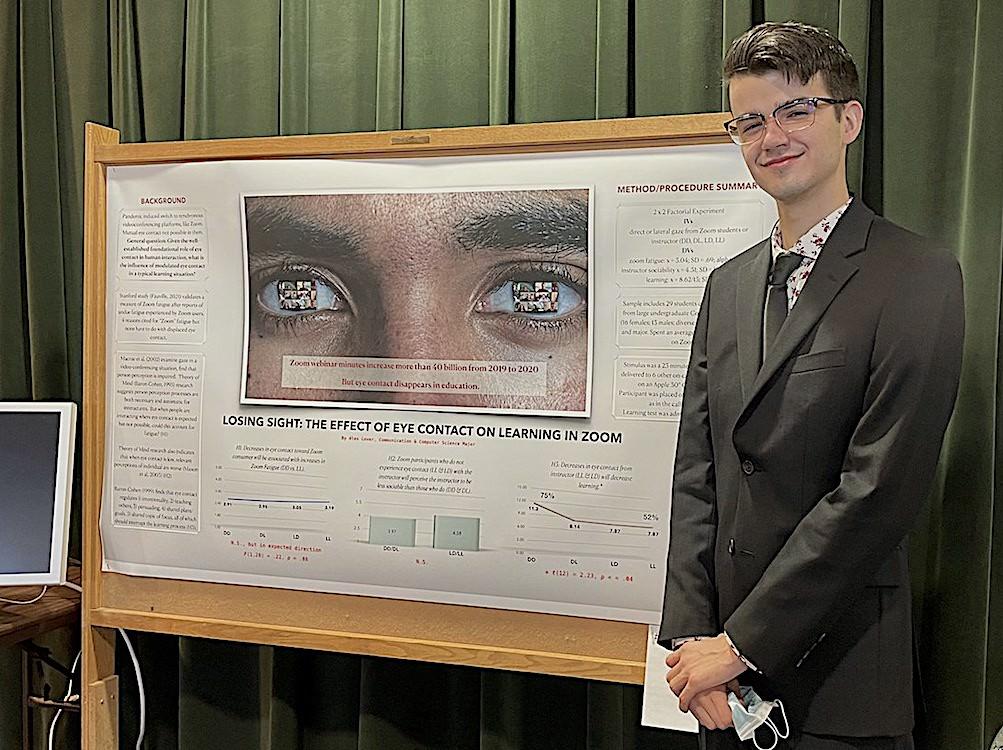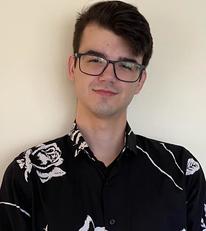Alex Lover leans into his notebook and writes down his observations in his time log. He’s in the midst of watching a zoom recording of a communication class. The corner of his screen shows a student with red hair yawning while the professor is lecturing.
Keeping his eyes locked on the time and each student, he is watching closely for a pattern in the student engagement with the professor. He’s looking for eye contact. After following several surveys, interviews, and assorted notes after monitoring, Lover came to a few hypotheses. This was just the beginning of an extensive research project he would come to spend months on.
From Chaska to UMD
Lover grew up in Chaska, Minnesota. In high school he recalls alumni speakers coming into his classes to talk about UMD. He mentions, “I remember them talking very highly about UMD and how great the professors were. That was what really intrigued me.”
As he nears graduation, he reflects on his schooling at UMD as “an interesting journey.” He started at UMD as a music major, but quickly decided he wanted to switch to something “more techy.” Lover says, “I grew up most of my life being into computers and learning how they worked.” It made sense for him to major in computer science.
A Double Major Moment
Nearing the end of his four years at UMD, Lover took a communication class called, “The Dark Side of Media and Entertainment” with Dr. Edward Downs. He was “so inspired” that he decided to add a major in communication.
Fast forward to his last semester. Most of what Lover studies is communication based.
UROP Project
The Kirby Rafters are packed with students, faculty and conversation. Lover stands alongside his poster and begins to describe his UROP project about the effect of eye contact on learning in Zoom.
With guidance from UMD associate professor in communication, Aaron Boyson, Lover was able to build his project from the ground up. He recalls questioning the effect of Zoom and in person eye contact, especially during the COVID-19 pandemic. He says, “People can’t make eye contact over Zoom, so why don't we research that?”
The process of the experiment began with 30 volunteer students in a Zoom course. Lover examined each of the students eye contact, body language, and overall behavior during the virtual class. After months of writing down observations, scanning surveys, and researching, he says he found one significant difference.
Two results of the initial study didn’t show a significant difference, 1) an increase in eye contact will increase the perception of instructor sociability and 2) a decrease in eye contact from the instructor will decrease learning. The results did reveal that the students who had more eye contact with the professor learned more. Lover says, “With a small sample size, you usually don’t have many results.” Boyson will continue the research in spring 2022.
Lover enjoyed interacting with the people during the fall UROP exhibition. Lover gave people a new way to think about Zoom. “That’s the cool part of the showcase,” he says. “Hopefully people can take my research and help.”
About the Department of Communication
About the Department of Computer Science
This story was written by UMD student Maija Johnson, who is majoring in journalism. Maija works with Cheryl Reitan in University Marketing and Public Relations.

